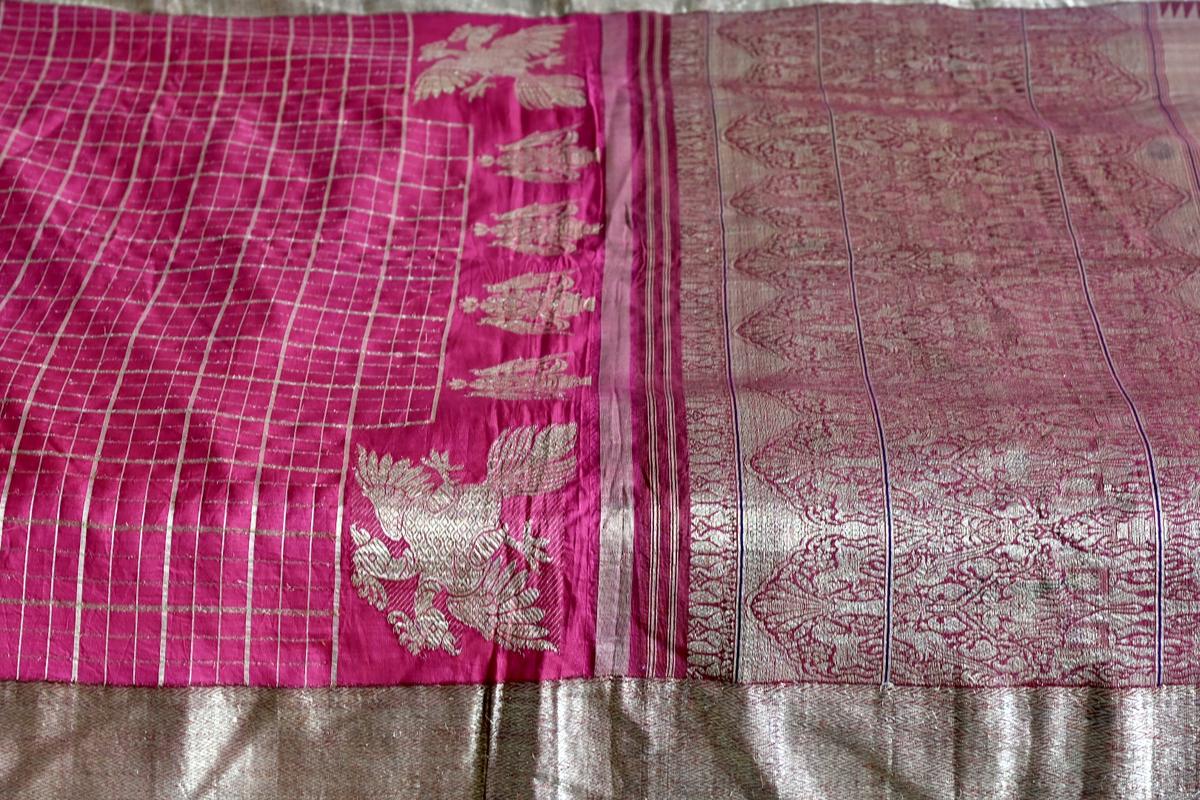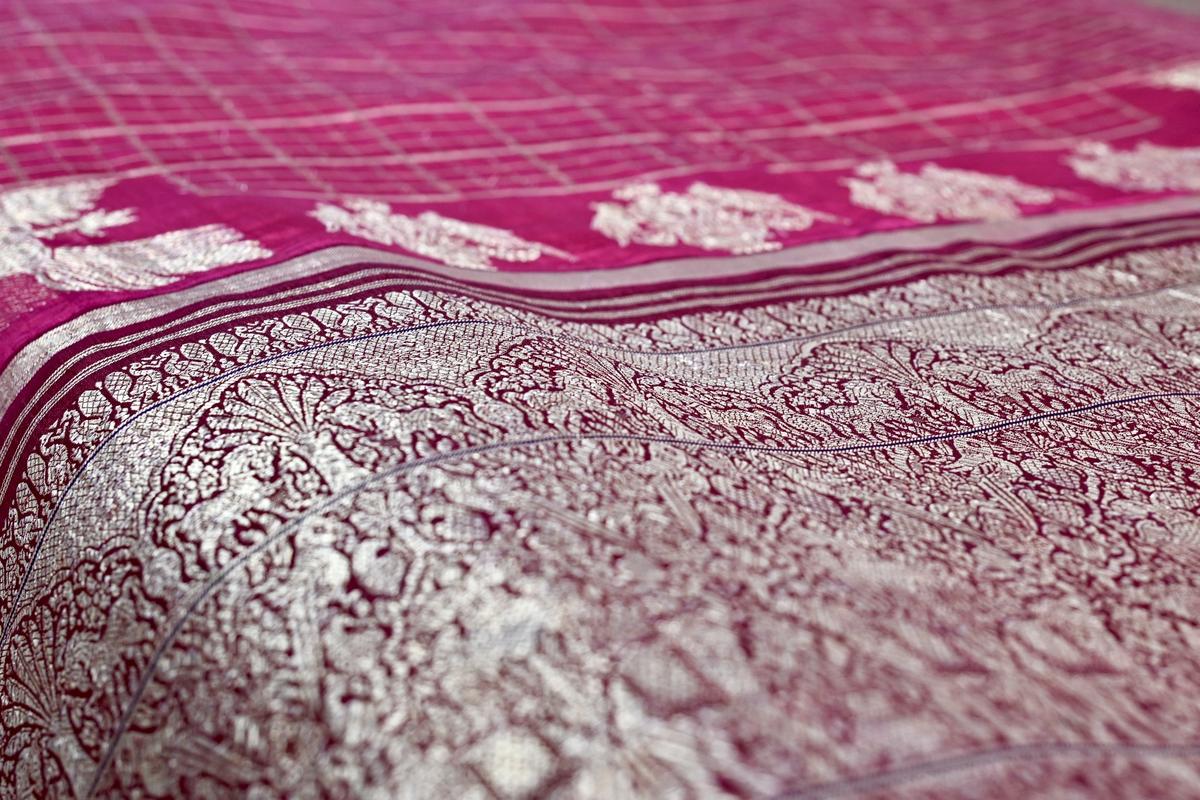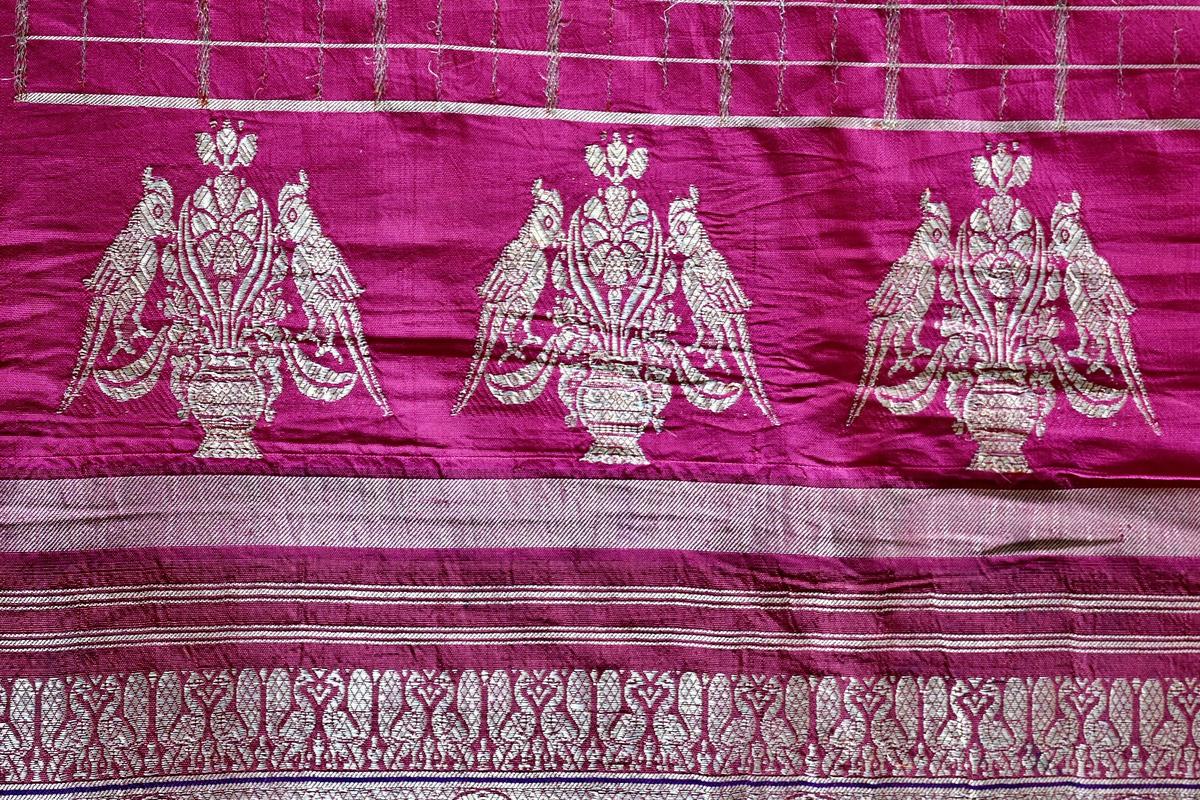[ad_1]

The 112-year-old gold sari from the Maharaja of Mysore Nalvadi Krishnaraja Wadiyar
| Photo Credit: SUDHAKARA JAIN
Kamal TN and Sowmya, residents of Subramanyapura in Uttarahalli, are custodians of a woven legacy that dates back more than a century. The article in their possession is a gold sari that was commissioned by none other than the Maharaja of Mysore Nalvadi Krishnaraja Wadiyar.
For four generations, this family has been safe guarding a pure silk-and gold-sari weighing nearly two kilograms, which was presented to Kamal’s great-grandfather Tunga Adappa Shetty, Head Shroff of the Mysore Palace by the then Mysore King Nalwadi Krishnaraja Wadiyar. The sari was a return gift to the devoted palace employee whom the King held in high regard.
“It is said, the two were known as walking friends,” says Kamal.

The 112-year-old gold sari from the Maharaja of Mysore Nalvadi Krishnaraja Wadiyar
| Photo Credit:
SUDHAKARA JAIN
“We keep the sari in a pure cotton cover inside a locker, bringing it out only during Navaratri as the sari symbolises Devi Shakthi, and has to be worshipped during the nine nights that represent the feminine nature of the divine,” says Sowmya.
The Tunga Adappa Shetty family are well aware of the sari’s heritage value. Kamal’s father Narayana Murthy says, “We are fortunate that my son Kamal and daughter-in-law Sowmya have a similar mindset in honouring our cultural inheritance. This outlook has seen this century-old sari preserved in its original splendour.”
“We follow this as a tradition and the sari is at the centre of Navaratri puja and festivities. It is only for one day during Dasara that the sari is displayed for the benefit of textile connoisseurs and heritage lovers. Elders in the family have told us the Maharaja took personal interest in ensuring the Kanjeevaram craftsmen adhered to the specifics they were given,” says Sowmya.

The 112-year-old gold sari from the Maharaja of Mysore Nalvadi Krishnaraja Wadiyar
| Photo Credit:
SUDHAKARA JAIN
“According to stories handed down, it took the best of Tamil Nadu’s weavers a few months to create the sari in pure silk and gold zari. Adappa Shetty and the Maharaja monitored its progress, with weavers regularly bringing them the sari for approval as it took shape,” adds Kamal.
Warp and weft
In 1897, during the reign of Mysore Maharaja Nalwadi Krishnaraja Wadiyar, a fire broke out at Amba Vilas Palace at the wedding ceremonies of his sister Princess Jayalakshmanni. The 11-day inferno reduced the royal mansion to a heap of rubble, despite the best efforts of experts who were called in from Bengaluru.
The new Fort Mysore Palace which came up in its stead was inaugurated in 1912, and the Maharaja opened it for viewing to thousands of invitees. Tunga Adappa Shetty and his family were one of the special guests at the occasion and the hand-woven Kanjeevaram wonder was an exclusive return gift for them from the Maharaja of Mysore.
Attention to detail

The 112-year-old gold sari from the Maharaja of Mysore Nalvadi Krishnaraja Wadiyar
| Photo Credit:
SUDHAKARA JAIN
Apparently, the Maharaja wanted to immortalise the new palace in a work of art for posterity’s sake. After several discussions, it was decided to have a sari woven that captured its design and décor. “The sari shows Amba Mahal in its entirety and is said to be the only depiction of the palace’s history recreated in fabric. That the Maharaja chose to gift this piece of art to my great-grandfather, from among his close associates, explains their friendship and bond. That is what we treasure, apart from its material value,” says Kamal.
The sari is a resplendent hue of magenta with gold checks running throughout and an extravagant gold brocade border. Its pallu sports the erstwhile Mysore State emblem of the Gandaberunda (mythical bird) sitting bold and pretty on either side, while multiple panels within have traditional motifs of parrots, swans, horses, elephants, peacocks and pillars.
The sari retains its original glory from the time it was woven in 1912 and till date, its colour, sheen and thread work remain intact due to the use of pure zari and silk, say its owners.
For details of Navaratri display this year contact kamaltn@gmail.com or call 9343885151
Published – October 08, 2024 07:06 am IST
[ad_2]
Source link





